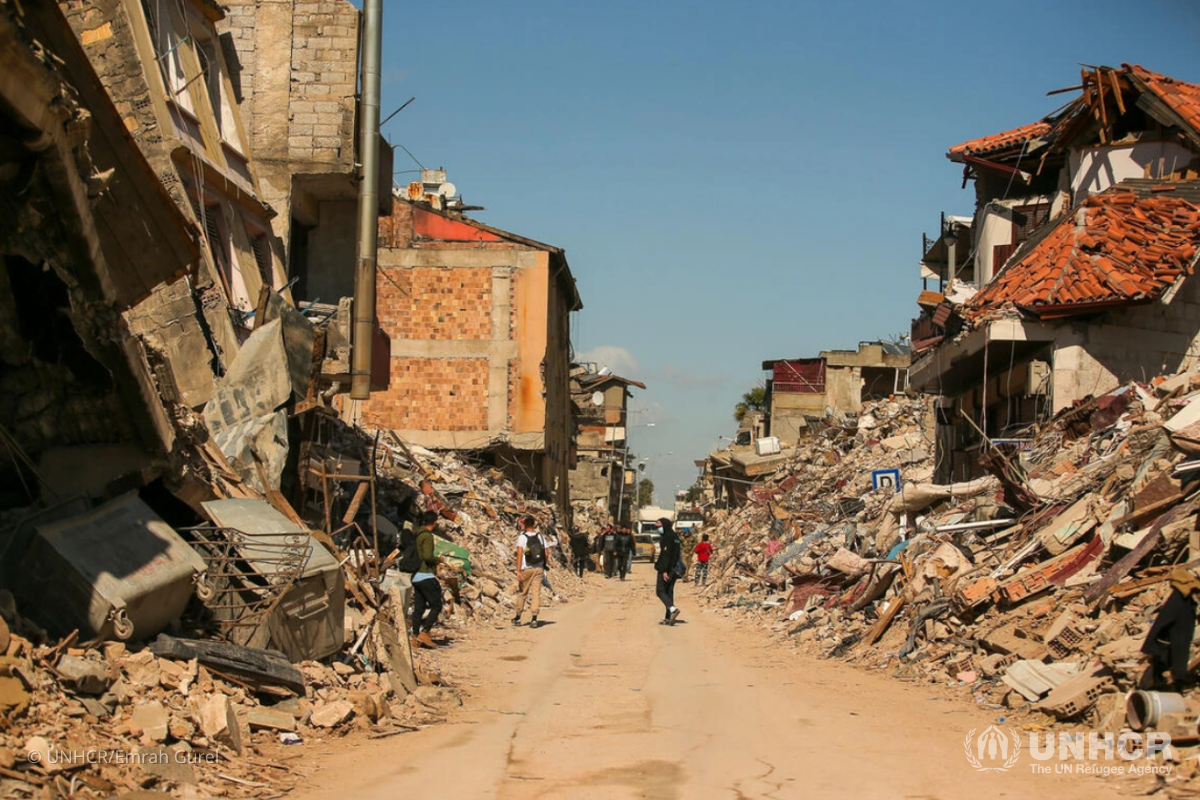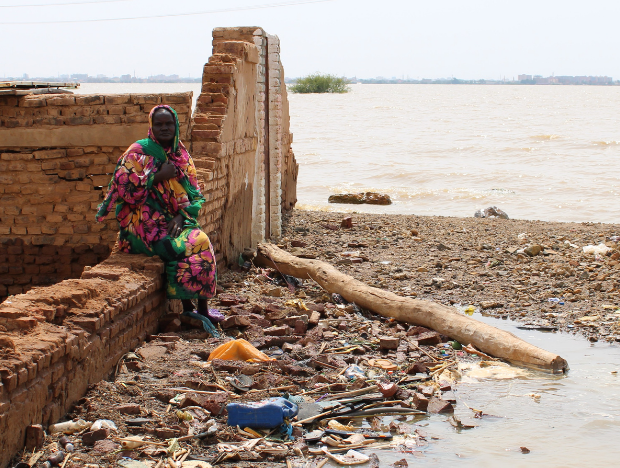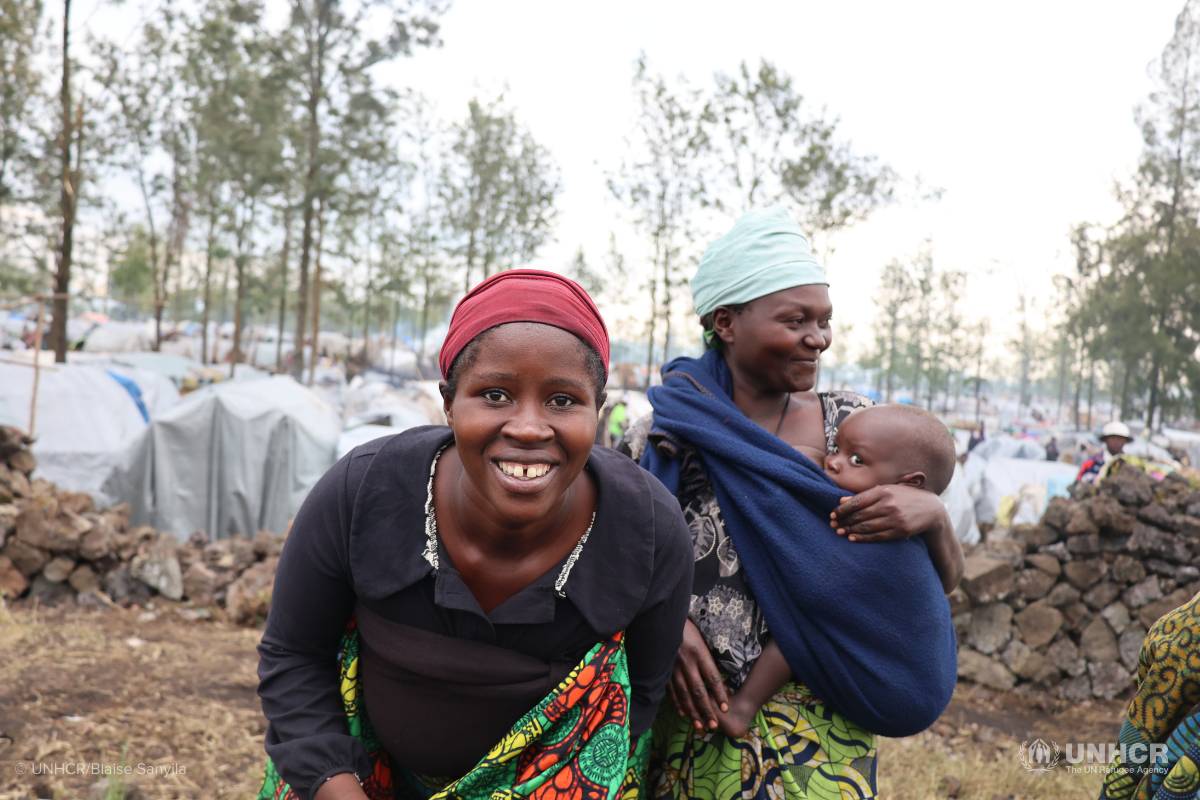How Rohingya refugees are helping each other survive monsoon season
In August 2017, armed attacks, widespread violence and serious human rights violations forced hundreds of thousands of Rohingya to flee their homes in Myanmar’s Rakhine State. Many undertook dangerous sea journeys across the Bay of Bengal to seek refuge in Bangladesh.
Today, more than 926,500 Rohingya refugees now call Bangladesh home. Though many have found safety in Bangladesh, Rohingya refugees living in camps are particularly vulnerable to monsoon rains and landslides.
Each year, from June to October, the monsoon season brings heavy rainfall and strong winds to Bangladesh. These weather conditions increase the risks of floods and landslides, and elevate the threat of water-borne disease outbreaks such as cholera. Clean water is a vital and vulnerable resource in Rohingya refugee settlements, and dangerous weather conditions can disrupt the availability of clean water, sanitation and hygiene (WASH) infrastructure and services.
Learn how monsoon season has impacted refugees in several Rohingya refugee camps, what UNHCR is doing to help refugees prepare for the heavy torrential rains and how you can help vulnerable families survive the dangerous months ahead.
Mohammad and Hossain
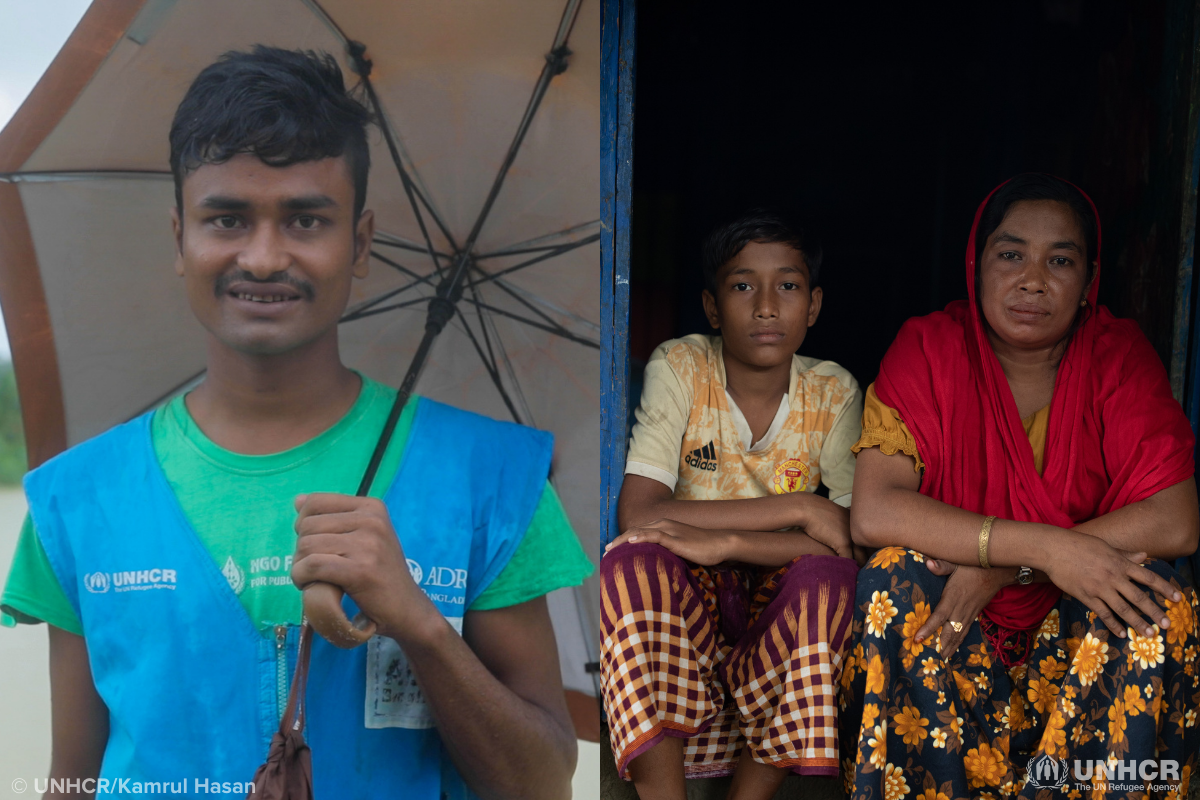
Ahead of the 2019 monsoon season, more than 230 Rohingya refugees benefitted from “monsoon training” in Nayapara camp, including 14-year-old Mohammad.
Mohammad was among a group of boisterous children playing in the rising waters of a reservoir. Nearby, Rohingya refugee volunteer Hossain kept a watchful eye on them. Hossain had participated in the monsoon training program, and was aware of the dangers of rising flood waters in the reservoir. Suddenly, the joyous sight of children playing turned into an emergency scenario, when Hossain noticed Mohammad needed immediate assistance.
“When I looked out, it seemed like someone was sinking in the reservoir. I immediately shouted for other volunteers on duty to come and help,” explains Hossain.
Thanks to the training program supported by UNHCR, the UN Refugee Agency, and two of its partners, Hossain and his colleagues were able to save Mohammad.
Rahima and Abul
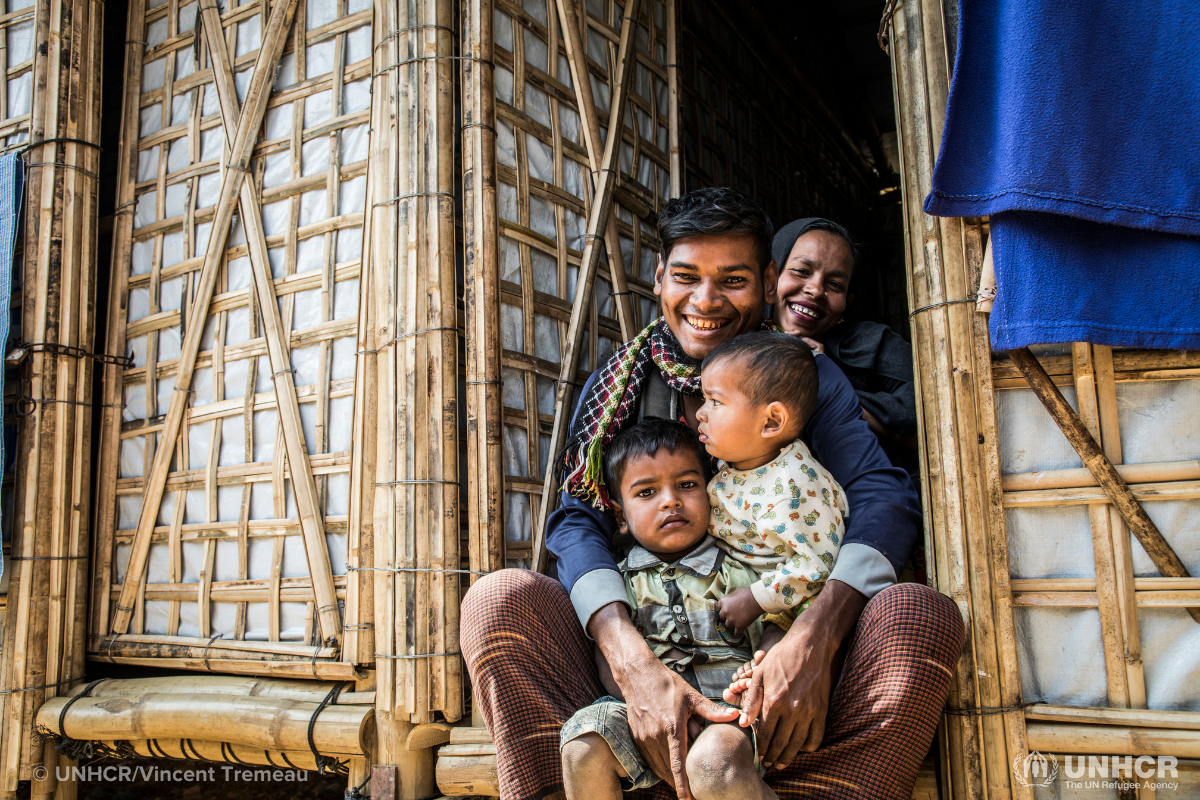
In August 2017, Rahima and her husband Abdul fled Buthidaung, Myanmar when their neighborhood was attacked. Their story is similar to the hundreds of thousands of Rohingya refugees who fled the violent military crackdown and crossed the border into Bangladesh.
After finding refuge in Kutupalong refugee camp in Cox’s Bazar, the couple lived in fear that heavy monsoon rains would wash away their home.
Their anxieties have eased after they were relocated to a new bamboo-framed shelter with their three-year-old son, Ayaz, and his baby brother, Arafat.
“I’m not worried about the rains now. We are at peace,” says Rahima.
In a joint effort, UNHCR has helped replace and repair tens of thousands of shelters, built extensive road networks, installed drainage, bridges and solar-powered street lights, and opened dozens of health facilities and nutrition centers to help Rohingya refugees survive monsoon season and beyond.
Meher and Samuda
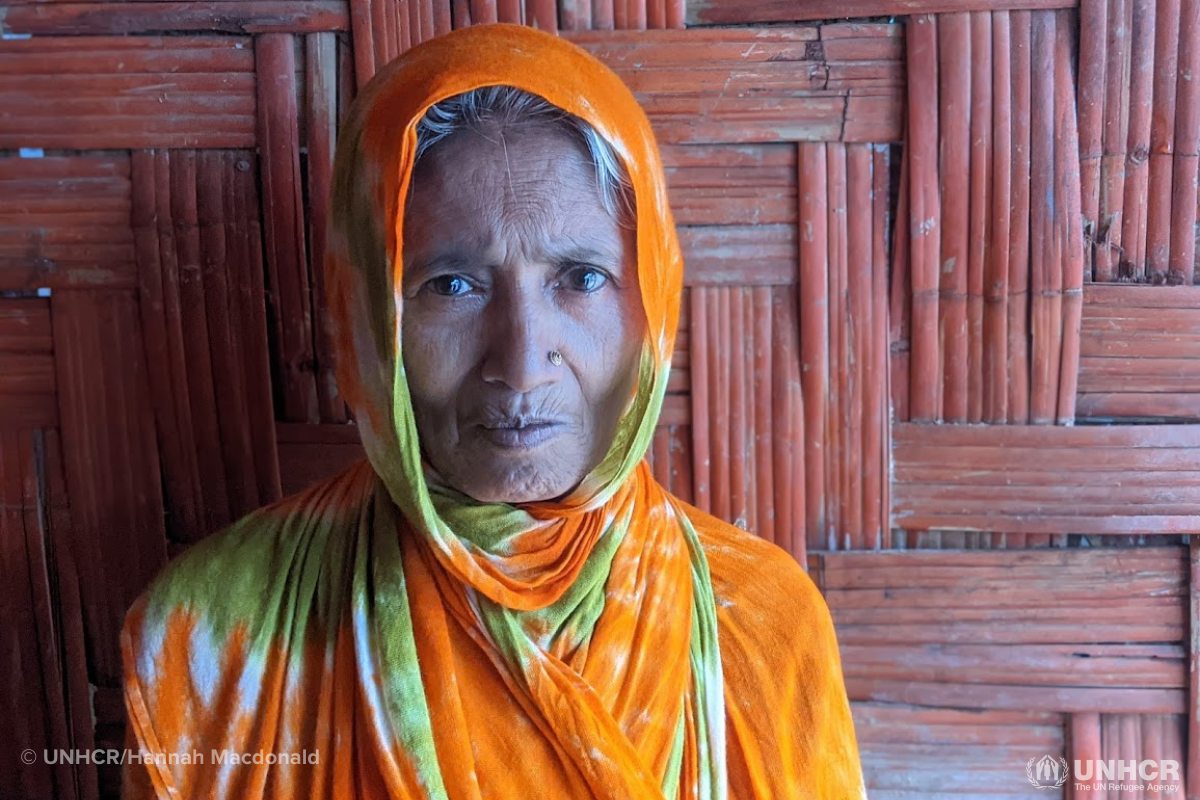
In July 2021, Meher and her son were forced to take refuge in a learning center after their shelter was destroyed by flash floods caused by heavy monsoon rain and high winds — which devastated Rohingya refugee settlements in Bangladesh.
According to initial reports, more than 12,000 refugees were affected and an estimated 2,500 shelters were damaged or destroyed.
Refugee volunteers trained by UNHCR and partners, like Samuda, work day and night in heavy rain to help families in urgent need. In some cases, this involves rescuing refugees from shelters destroyed by landslides.
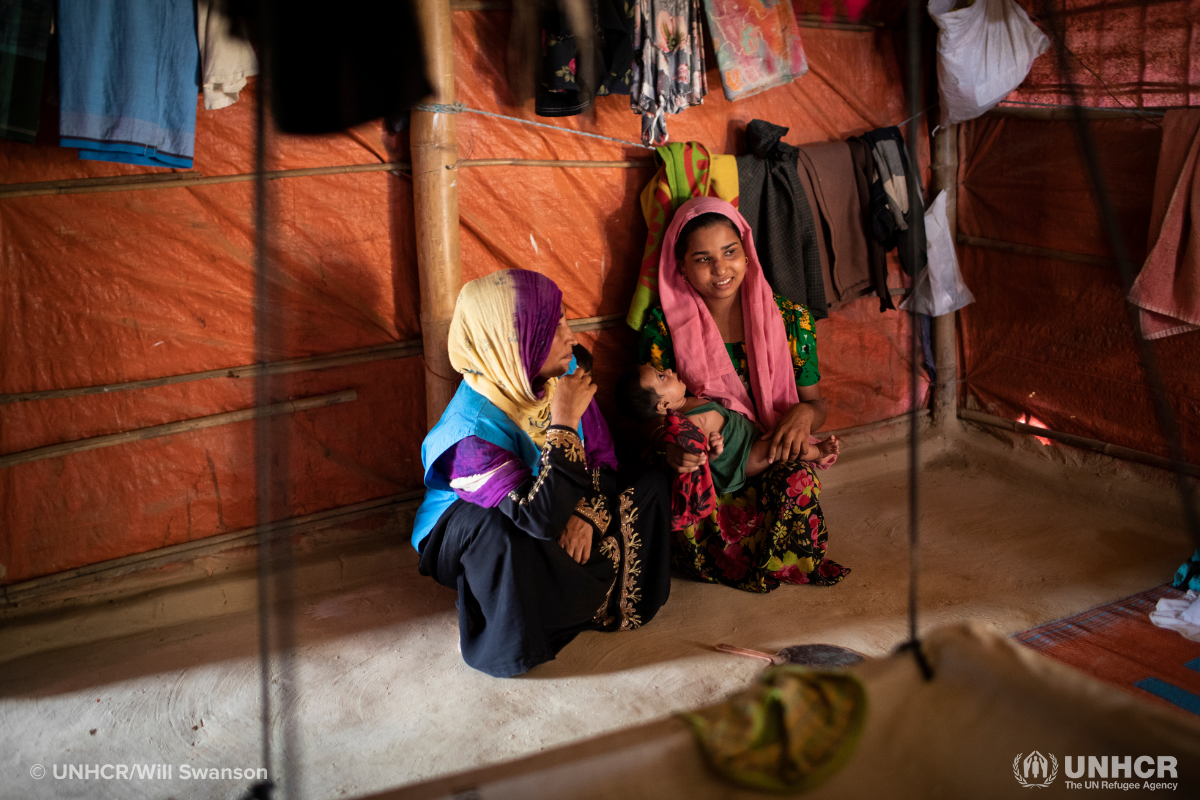
"They only move when the mud hits them,” says Samunda, who visits fellow residents in Camp 21 to educate them about the benefits of relocating to shelters during monsoon season.
So far, more than 5,000 refugees have temporarily relocated to other family members’ shelters or communal facilities.
How you can help families during monsoon season…
UNHCR is on the ground providing lifesaving aid, protection and hope to hundreds of thousands of Rohingya refugees.
However, help is still needed.
Becoming a monthly donor is the most effective way to help displaced individuals facing climate emergencies and extreme weather like monsoon season. Make a difference in the lives of refugees by becoming USA for UNHCR’s newest monthly donor.
